Dandelions are beautiful wildflowers that provide an important source of food for pollinators. They flower early in the year long before any other plants. Bees, butterflies, and many other insects feed on the pollen and nectar, and caterpillars of butterflies and moths feed on the plants. Some species of bird even feed on the seeds.
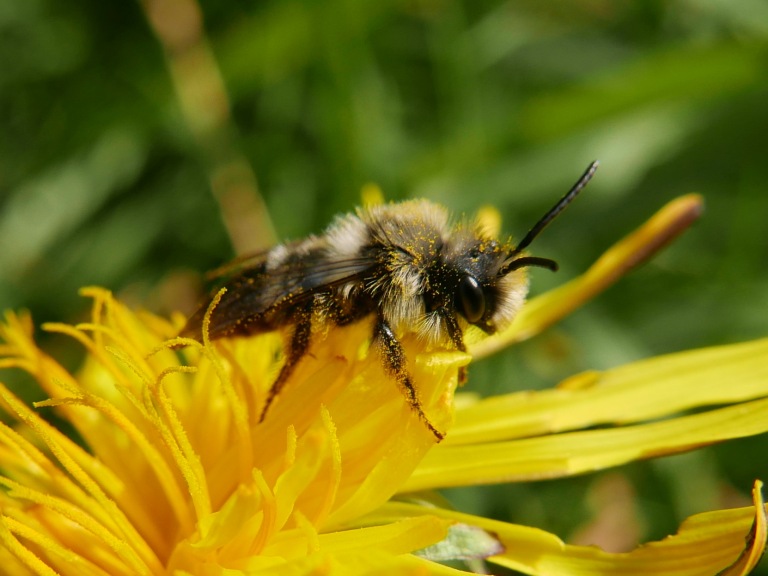
Dandelions are part of the daisy family and although it can sometimes be hard to tell them apart there are actually an incredible 240 species of dandelion in the UK alone. The name dandelion comes from the French word ‘Dent de lion’ which means lion’s teeth, because of the jagged edges of the leaves.
Dandelions have a fantastic mechanism of dispersing seeds using downy fluff as a parachute to catch and ride the wind with, this enables to seeds to be carried up to 5 miles away from the original plant. Did you know that fossils of dandelion seeds have been found that date back over 30 million years?! Children throughout history have taken great delight in blowing dandelion ‘clocks’. Its something I still enjoy as an adult.
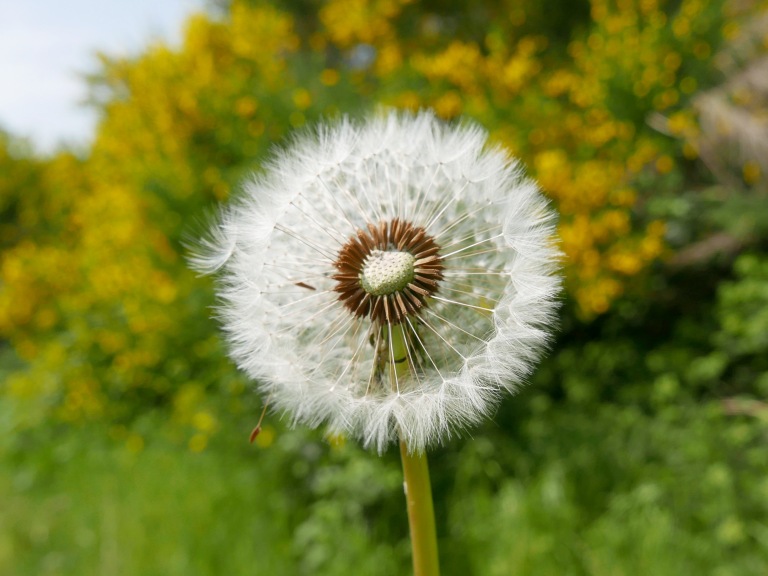
The entire plant of the dandelion is edible for humans, you can eat the leaves, stems, flowers, and roots of dandelions. They are a rich source of vitamins A, C and K and contain high levels of iron, calcium and potassium. Throughout history dandelions have been used for food and medicinal purposes. They were considered a delicacy by the Victorians who ate them in sandwiches and salads and up until the 1800’s it was common for people to grow dandelions in their gardens.
Recently scientists have discovered that the milky liquid produced in the stem of dandelions contains latex which they have been able to produce environmentally friendly rubber tyres from.

It’s a shame that they have now become unwanted “weeds” that are often pulled up or killed off by chemicals. Not only because they are an important source of food for wildlife but also because actually improve the quality of the soil by increasing the content of nitrogen and other minerals.
Wouldn’t it be wonderful if we all let these amazing wildflowers grow wild in our garden’s once again. Not only would you be helping wildlife, you would also be able to enjoy many of the fun dandelion activities and recipe ideas below

1. Look for wildflowers in urban spaces
You might be surprised to find even the most urban spaces (from cities and towns to roadsides and pavements) are bursting with wildflowers and plants when you take the time to look closely. We often think of plants that grow in places we don’t want as weeds, but in reality they are just wildflowers and plants that are trying to grow and survive in an increasingly shrinking natural world. How about going on a wildflower hunt to see how many dandelions and other varieties of wildflowers you can spot and find along the way. You could take a notepad or camera with you to record your finds and even print photo identification sheets off as a guide. Or how about taking some chalk with you so you can write the names of the plants out beside them.

2. Go on a wildlife safari amongst the dandelions
You will often find pollinating insects like bees, beetles, butterflies and moths on or around dandelion flowers feeding on the nectar. You might even spot other species insects hiding under the petals, leaves or on the stems. The undersides of flowers and plants are often teeming with insects, eggs, caterpillars and larva that you would normally overlook. It’s the perfect place for them to shelter away from predators, wind and rain as well as often providing a source of food. You could take a notepad or camera with you to record your finds or even print out some nature bingo or scavenger hunt sheets. You could take a notepad or camera with you to record your finds or even print out some nature bingo or scavenger hunt sheets. You could also help citizen science by recording any thing you find on either the iSpot or the iRecord databases.

3. Dandelion nature art
Nature art (also sometimes called land art) is a wonderful nature activity that encourages creativity and fine motor skills in children of all ages and abilities. All you need is some imagination and natural materials to make a picture. If you grow your own dandelions (please don’t pick wildflowers unless you have grown them yourself) you can use them to make some bright and beautiful nature art pictures and patterns. After you have finished making pictures you can also then bake or cook with the dandelions using one of the many recipes below.

4. Dande’lion’ masks
As we said above the name dandelion comes from the French word ‘Dent de lion’ which means lion’s teeth, because of the jagged edges of the leaves. So we thought it would be fun to use the leaves to make a dande’lion’ mask for pretend play and roleplay games.

We hate to waste anything and recycling and reusing materials is one of many small things we can all do to help the environment. So instead of chucking used cardboard boxes we like to find ways to use them in crafts and activities.
For this activity you will simply need to cut a circular shape out of some recycled cardboard and then draw or paint on a simple lion face. Then the children can have fun sticking dandelion leaves onto the back of the mask (we used double sided tape) to form a leafy mane.

5. Plant growing experiment with dandelion seeds
You can easily grow dandelions from tiny seeds into beautiful flowering plants with a little time and patience. It’s a fascinating process to watch and a great STEM activity for children of all ages. All you need for this activity is some dandelion seeds (from a flowering wild plant), soil and a clear jar or CD case so you can observe every part of the plant growing.

Simply fill about a half of the jar or CD case with soil, making sure you leave room for the plants to grow above the soil. then pop your seeds just on top or a tiny bit under the soil. You want them to be sat against the side of the case or jar so you can watch them grow. Hopefully you should be able to see the roots and shoots emerging from the seeds/bean cases as they would do if they were planted underground. Its fascinating to watch the roots spread out and downwards as the shoots grow upwards and turn into leaves.
This is a great opportunity to talk what seeds need to grow (nutrition like soil, water and sunlight). And to discuss why and how seeds come in all shapes and sizes, from strawberry pips, sunflower seeds and dandelion clocks to peanuts, acorns and conkers.

You can measure your plant each day using a ruler to see how much it’s has grown. Keep a diary and make observations or drawings of the plant/seed at different stages. When your plant starts to out grow the jar or CD case then it’s time to replant it into a pot or in the garden for the wildlife to enjoy.
6. Dandelion potato prints
Potato printing is a simple activity for children of ages, all you need is a potato cut in half, a bit of inspiration and some paint to get started. Potatoes are a great environmentally friendly material to use as stamps for printing as you can compost them after use. To create a dandelion potato print you just need to cut a potato in half and then cut some small triangular slithers all around the edge of the half. Then simply dip the potato into paint and print onto paper, card or fabric. You can then draw, paint or glue on some plant stems and or leaves.

7. Dandelion fork prints
Even simpler than potato printing, simply dip a fork into paint and then use it to print dandelion flower shapes onto paper, card or fabric. Again you can then can then draw, paint or glue on the plant stems and or leaves.

8. Nature threading and weaving
A piece of recycled cardboard makes a great base for a threading and weaving nature hunt board. All you need to do is ask the children to draw, paint or cut simple pictures, shapes or faces onto some cardboard. (Or you could do it for them if they are too little). Then carefully poke a pencil through the cardboard at different points to make holes for the children to poke, thread and weave found natural materials through. You could use leaves, long grass, plant stems, bark, fallen fruit, nuts, seeds and flowers*. *Pretty please don’t please don’t pick wildflowers unless you have grown them yourself or you can use any fallen ones you find on the floor.

9. Sensory water play
Water play is a great sensory activity for children of all ages. Dandelion flowers and leaves scattered in the water help to add extra scent, colour and texture for the children to enjoy and explore. Lavender and mint are also wonderfully calming herbs to use, but you could also use uplifting fresh citrus fruit slices as well.

10. Sensory ice play
After you finish you can recycle the water and materials by pouring them into different shaped containers to freeze and replay with as ice blocks another day. It’s fascinating to see the objects trapped in the ice. You can hold the ice up to the light or experiment melting or breaking the ice in different ways using salt and warm water. Or the children can have fun stacking and playing with the ice to make towers.

11. Dandelion painting and printing
A simple activity for children of all ages, Just dip dandelion flowers and leaves into paint and use them as natural paintbrushes or paint, print and mark make with. How about experimenting with other different natural materials to see what variety of marks you can make by using different shapes and textures.

You could also paint directly onto the leaves or flowers to decorate them. Or lay the leaves onto paper or cardboard and then paint over them to capture the interesting outlines of the leaves.

12. Dandelion playdough
It is surprisingly quick and simple to make your own homemade playdough using just kitchen cupboard ingredients. You can also easily add extra sensory elements with natural materials like dandelion flowers, leaves and petals, or you could pop in a few drops of food colouring or flavourings to give it a bit more scent or colour.

To make your playdough base you will need the following ingredients.
- 300g of plain flour
- 80g salt
- 2 tablespoons of cream of tartar
- 2 tablespoons of vegetable oil
- 240ml of hot water
First mix the flour, salt and cream of tartar together than add in the oil and any natural materials (see below for a handy list of suggestions). Next start to pour the water in slowly (you might not need it all) and if you are using food colouring or flavouring you can add a few drops now. If the playdough feels to wet then add in more flour it it feels to dry add in a few more drops of water. Finally knead your playdough until its a smooth consistent dough. Once it feels right then it’s ready to use.

Children can add additional natural materials to the dough as they play and have fun exploring and experimenting with mark making as well. Just remember that salt is toxic to plants and wildlife so do not leave playdough outside unattended or let it come into contact with grass or plants outdoors. We always play with ours on a tray or board.
Your playdough should keep for awhile in an airtight container in a cool dry place although the length will vary depending on the natural materials you use and if the playdough gets wet or damp during play. Always check it carefully before play and give it a sniff to make sure it doesn’t smell off.
13. Dandelion flower printing
An easy dandelion flower printing idea for little learners. Simply cut an old cardboard kitchen roll tube in half (or if you are using an old wrapping paper tube cut it into into quarters). Next you need to cut an even pattern of slits into one of the ends of the tube. Finally bend and fan out the strips to form the petals of your flower shape. You can then dip your flower shapes into paint for printing onto paper or card. Or even just decorate and paint the tubes themselves to create pretty flowers for decorations or use in pretend play.

14. Dandelion flower petal cookies
To make edible dandelion flower petal cookies you will need
- 100g butter (softened)
- 50g caster sugar
- 1 egg (lightly beaten)
- 200g plain flour
- A handful of freshly washed and dried dandelion petals

Before you start it helps to preheat the oven to 180 oC/340oF.0
First put the butter and sugar together in a mixing bowl and beat it together until it’s light and fluffy. Next gradually add in the beaten egg whilst continuing to stir the mix and finally add in a handful of dandelion petals.

Sift the flour into the bowl and fold it in, working the mix together until it forms a soft dough. Roll the dough into a ball and cover and leave it to firm up in the fridge for about 30 minutes.
Roll the dough out onto a floured surface then use cookie cutters to cut out any shape of biscuit you like. Place the biscuits shapes onto a greased tray or one that has been lined with grease proof paper.

Bake in the oven for 10-12 minutes or until the biscuits are golden brown then leave to cool for a few minutes.
Ours tend to get eaten very quickly (they are really tasty). But if you do want to store the biscuits they keep well in an airtight container for a week or you can also freeze them to enjoy at a much later date.
15. Dandelion vegan honey

To make vegan dandelion honey you will need:
- 2 cups of dandelion flower heads*
- 2 lemon slices or two drops of lemon juice
- 1.5 cups of sugar (white or brown)
- 1.5 cups of water
Ideally you can use fresh dandelion flower heads, but if you want to make sure you still leave plenty for the bees you can pick and freeze them a few at a time until you have enough.
Its best to pick the flowers first thing in the morning when they have just opened as they will be at their freshest with the most nectar. It might be an idea to leave the flower heads on a plate outside for a few minutes to allow any small insects to scuttle off.
*Safety note: Please don’t ever eat plants that may have had pesticides or chemicals used on them.
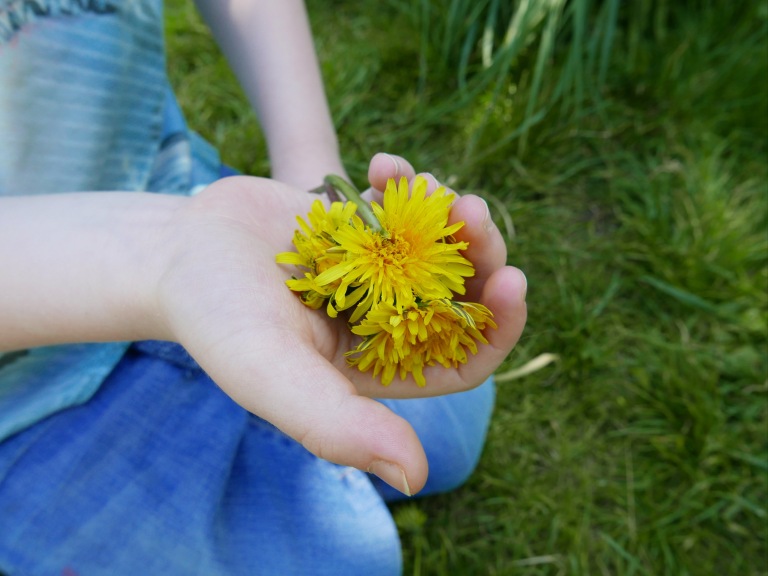
Carefully wash and inspect the dandelions to make sure they are free from insects.
Now your flowers are ready place them in a saucepan with the lemon slices and water. Cover and simmer gently for 15 minutes. Leave to cool and infuse for several hours or overnight.

When you have finished infusing your mix, pour it through a strainer (we used a sieve but you could use a muslin) to remove the flowers and lemon slices.
Next measure and weigh the amount of liquid that is left. Then measure out the same amount of sugar to mix in.

Pour the liquid and sugar into the saucepan and heat again gently. Stir until all the sugar has dissolved. Then gently bring it to the boil for 12-15 minutes or until the mixture starts to resemble sticky honey.
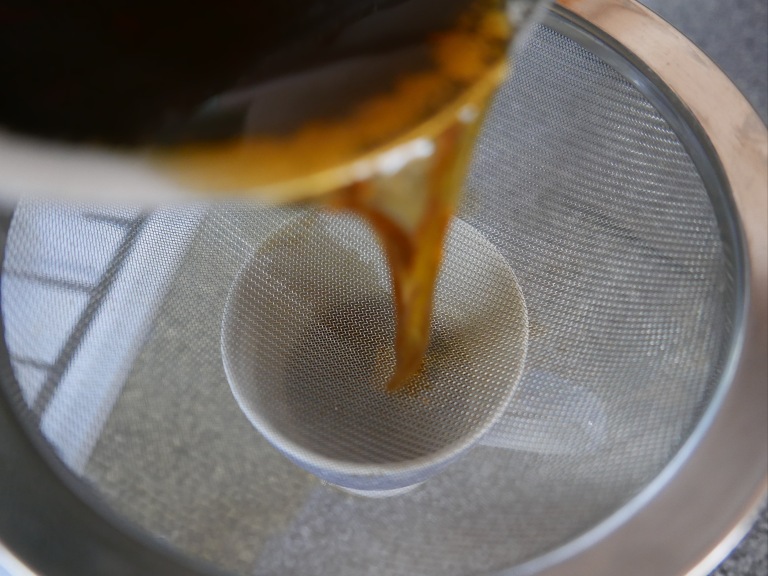
Carefully pour the liquid into a sterilised container and place the lids on whilst the mixture is still hot. You can sterilise old jam jars by rinsing them out well with soapy water then filling them with boiling water for 5 minutes or by placing them in a warm oven for a few minutes (caution this will make the glass really hot, so handle with care and over gloves.)
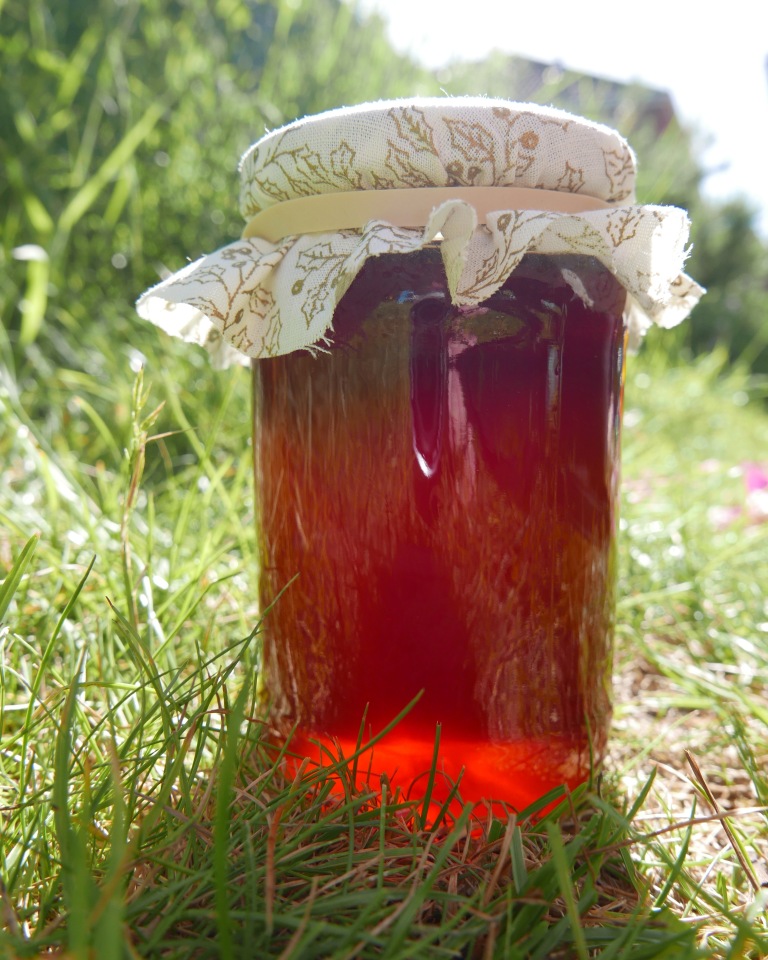
You can enjoy your Dandelion vegan honey on toast, pancakes, waffles or use it to flavour drinks or for baking cakes. Just store it in a cool dry place in an air tight container.
16. Dandelion root coffee (naturally caffeine free)
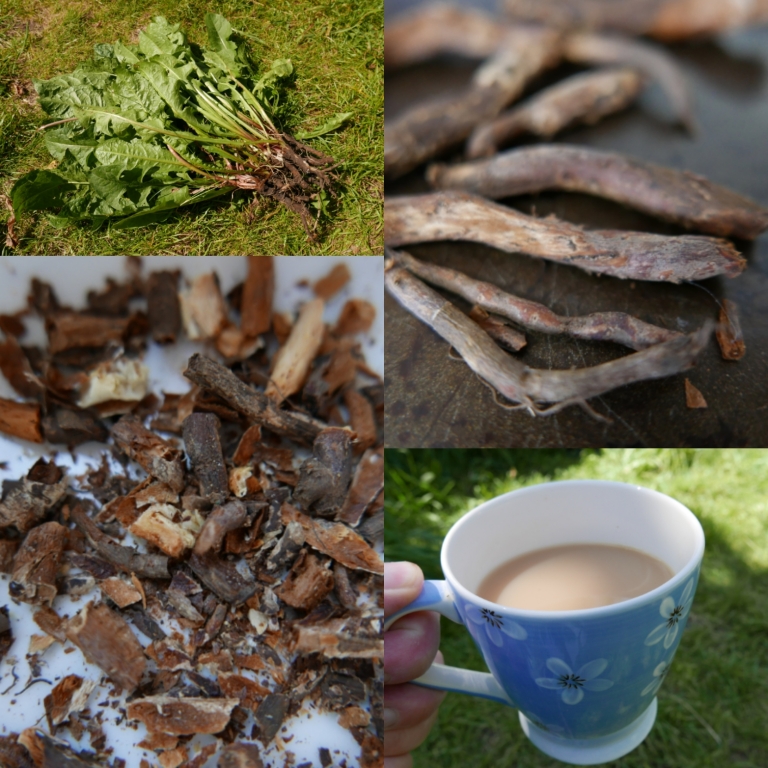
To make dandelion root coffee you will need:
- A handful of dandelion roots
- Water
- An oven
Simply dig up a handful of dandelion roots. Wash them well and pick off any little stringy bits of root.

Place on a tray in an oven pre-heated to 180oc and bake for 40mins then leave to cool.
Crumble the pieces into a saucepan with water (you want a cup and half full of water for each cup of drink you wish to make). Then simmer gently for 10-15 mins.

Pour through a strainer to remove all the pieces of dandelion root. You can then enjoy your caffeine free dandelion coffee black or with a splash of milk. You could also use it to make iced coffee or as a coffee flavouring in a cocktail.

Its really that simple! If you like you could also add a little cinnamon or other spices at the simmering stage to add more flavouring, or even add a dash of dandelion honey. But it tastes pretty good on its own.
17. Dandelion botanical dye
The process of making botanical dyes is very simple, you can easily create some beautiful coloured botanical dyes yourself using just foraged plants and vegetable scraps. You can then use it to colour fabrics like cotton, linen and wool or materials like paper, card and wood. Natural dyes are also a wonderful, environmentally friendly alternative to man-made synthetics. To find out how to make a botanical dye using dandelions flowers or leaves please click here.

For day 5 of 30 Days Wild 2021 we made dandelion cookies, started a dandelion growing experiment and enjoyed several dandelion arts and crafts.
If you like this you might like to try:
9 Nettle activities and recipes

12 Nasturtium recipes and activity ideas

14 Lavender recipes and activity ideas

15 rose activities and recipes
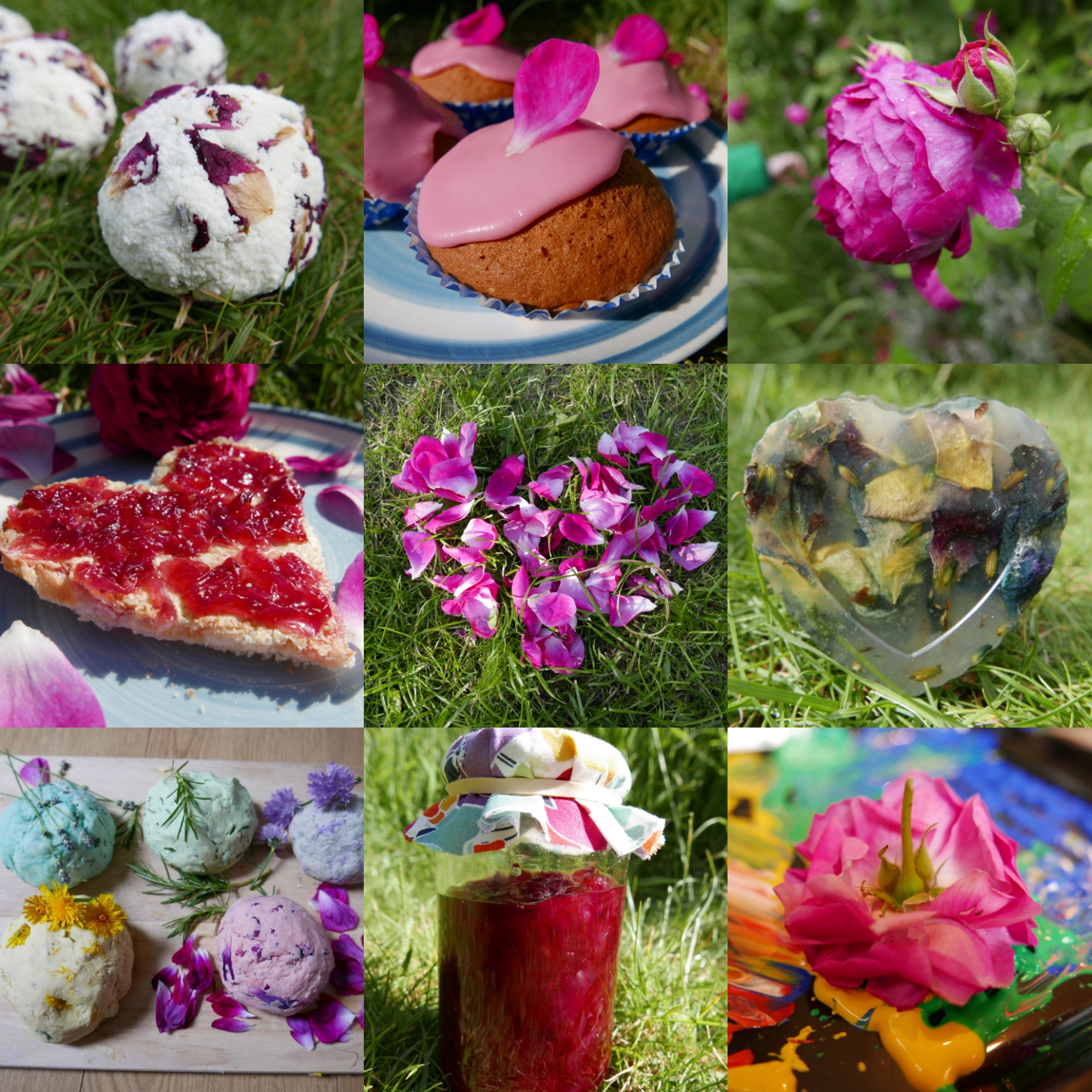

LOve receiving your emails.
This dandelion one, with the biscuits ❤ Will be trying them out
Bren
LikeLiked by 1 person
Hello Brenda, Thank you for the kind words they have brightened my day! The biscuit recipe works with any edible flowers and herbs. My favourite is rosemary as they have a beautiful sweet and slightly savoury taste. Hope you have a great day 🙂
LikeLike